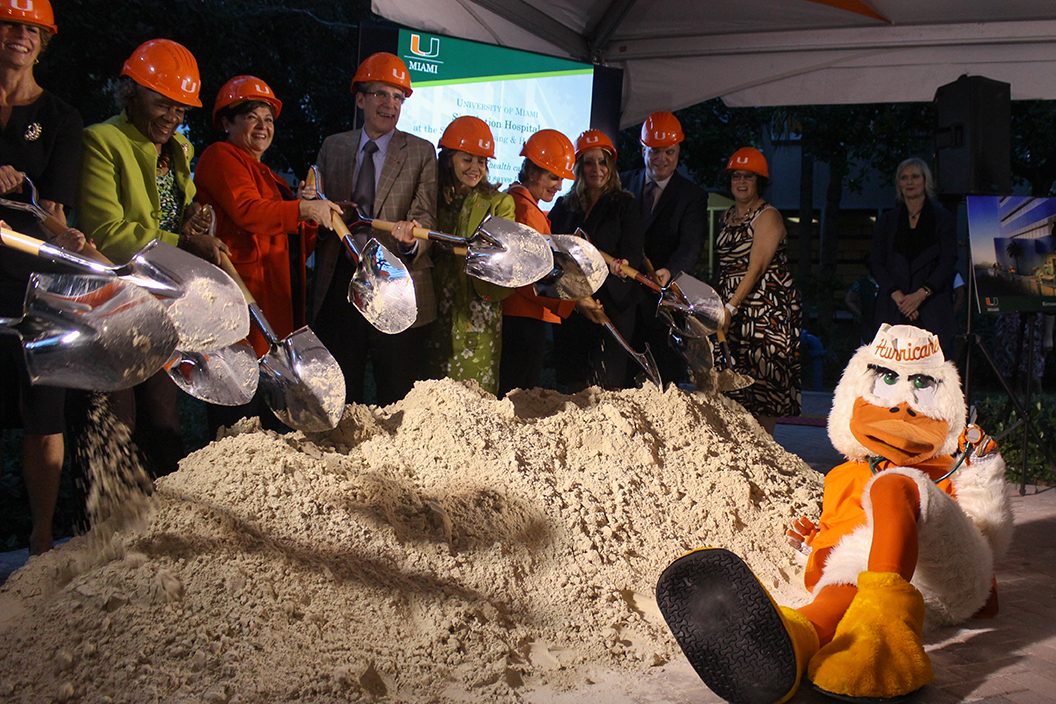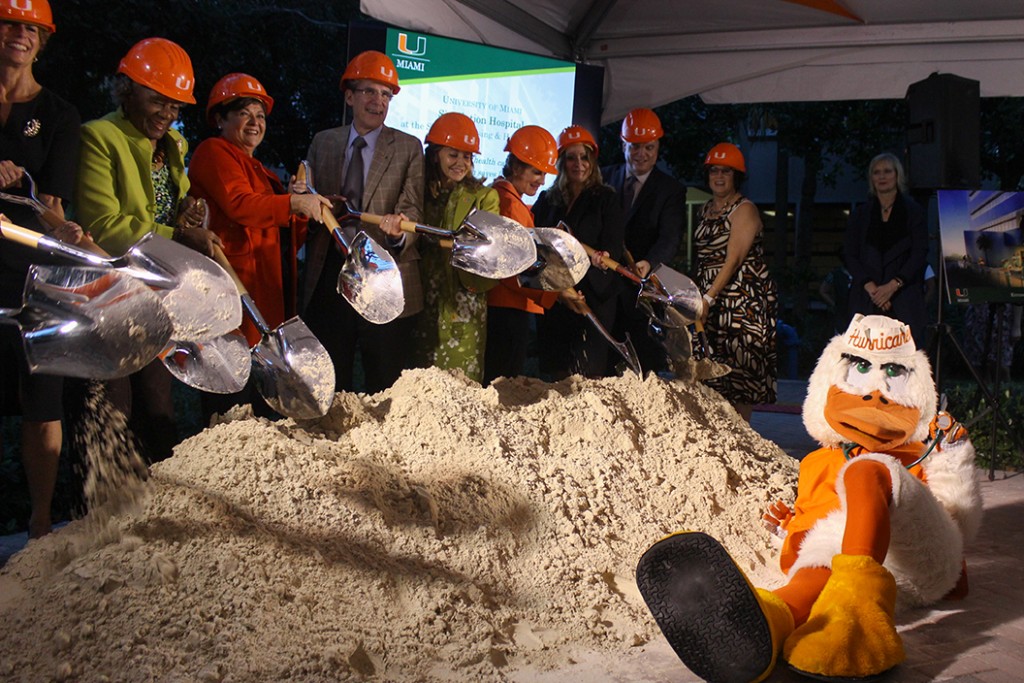

The School of Nursing and Health Studies (SONHS) broke ground on construction of one of the nation’s first education-based simulation hospitals Thursday afternoon.
The five-story, 41,000 square-foot facility would allow students to practice their skills in an immersed environment. University of Miami trustees, administrators, students, faculty, staff, donors and other guests gathered for the ceremony next to the M. Christine Schwartz Center for Nursing and Health Studies.
“The simulation hospital will be a destination center for cutting-edge education,” said Nilda Peragallo Montano, the Dean of SONHS. “I hear from community partners that they love hiring our graduates, and that is because of the preparation that each of them undertake in their course. This will redefine excellence in healthcare education.
Members in the audience were taken on an interactive tour of the numerous cutting-edge and up-to-date departments and facilities that will be featured in the new hospital. Each department will be outfitted with standardized patient actors — human actors who portray patients with real life symptoms — and have a designed purpose to familiarize nursing students with different scenarios.
The emergency department will have six Emergency Response (ER) bays where students can tackle a range of problems that patients suffer, from caring for trauma attacks to treating chemical attacks. Even the simplest procedures such as patient transport and hand-offs to different rooms will be taught.
The simulation hospital will also include intensive care units with the same high-tech equipment found in hospitals, labor and delivery rooms to simulate birth, and what-if scenarios for situations like a sick newborn baby.
The new construction was met with delight from President Julio Frenk, who has an extensive background in the healthcare field.
“I am a strong believer in using simulation as education,” Frenk said. “We can profit and exploit human errors, which will teach humans to learn from their mistakes.”
With $7 million at its disposal, the hospital’s fundraising has been led by Pamela Garrison, the co-chair of the simulation hospital campaign. They are still seeking donors, as total construction costs $12 million.
“As our country faces a shortage of nurses, it is more important to invest in innovation in the future of healthcare,” said Garrison, who is a retired nurse with over 50 years of experience in the healthcare field. “Simulation saves lives. I am sure many of you had [new] nurses practiced on you and you wish they had more practice before.”
The idea for the simulation hospital was conceived at the SONHS’s 65th anniversary two years ago. While the nursing school currently has a 5,500 square-foot simulation center, a simulation hospital is thought of as a huge upgrade.
Luis Diaz-Paez, an alumnus of the SONHS, spoke about how his experience in simulations helped him as a nurse at Jackson Memorial Hospital.
“Some new graduates have limited experience to life-threatening issues. For me, I was exposed to stressful life-threatening issues during simulation that helped me be confident to care for those critically ill patients,” he said. “Simulation provides the students with a flight-or-fight ambiance in a safe, controlled environment, without the risk of losing a life.”





